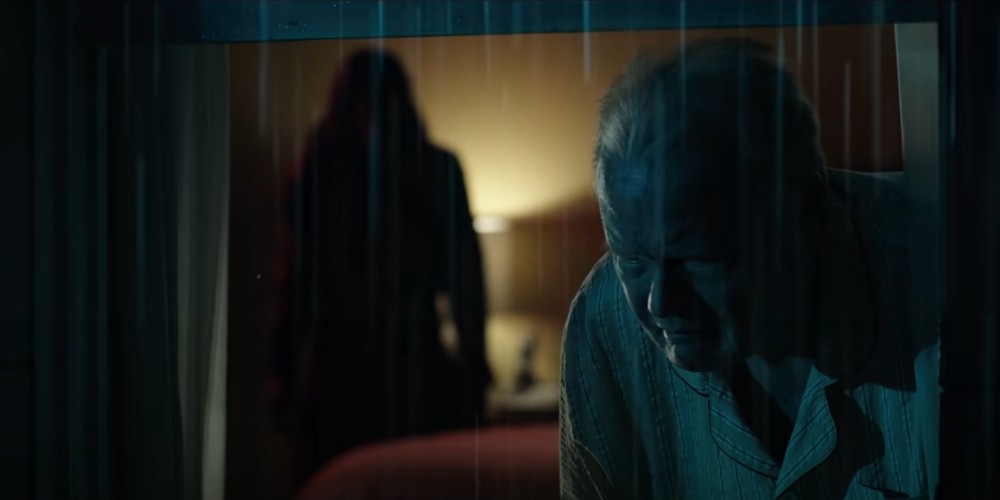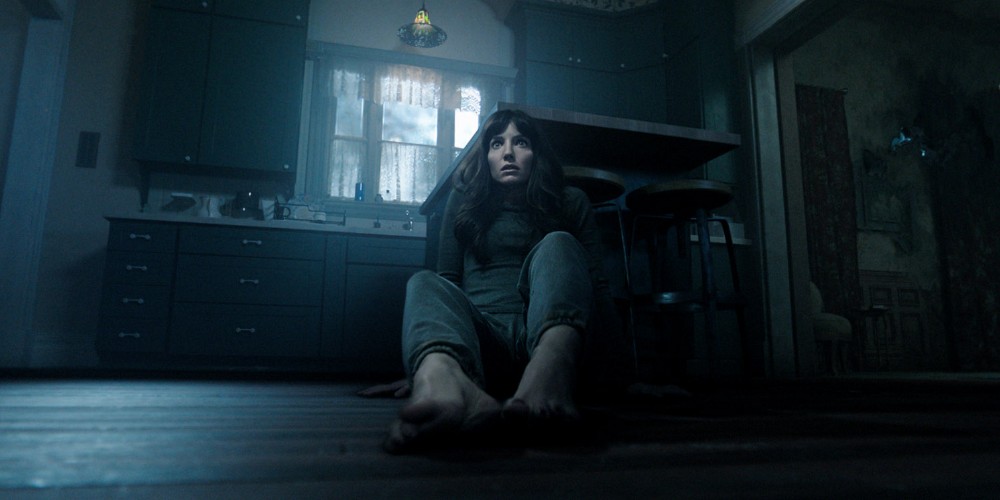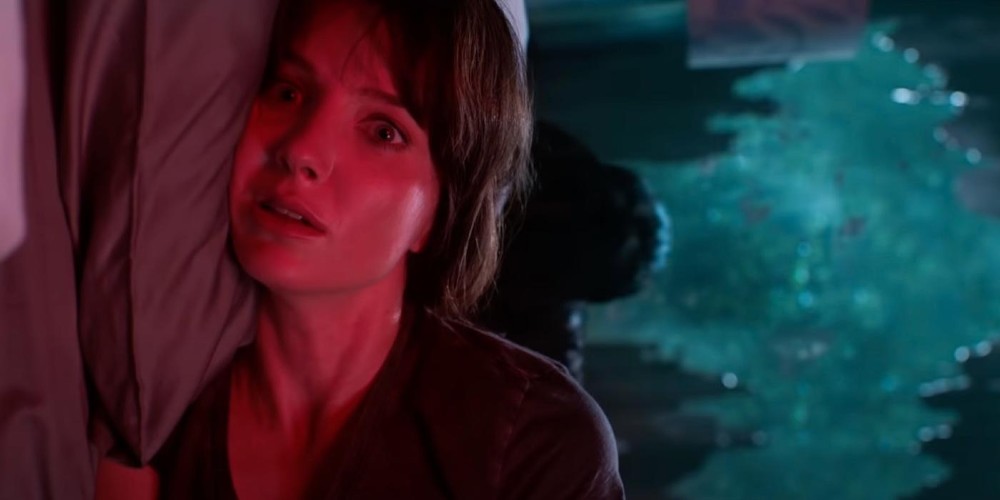Malignant, directed by James Wan and written by Akela Cooper with a story from James Wan, Ingrid Bisu, and Akela Cooper, tells the story of Madison (Annabelle Wallis), a woman who has horrifying visions of a string of murders, propelling her into a journey of self-discovery and self-worth.
Malignant movie review and score
Balancing Horror Inspirations in Malignant
Malignant build moments of genuine fright through utilizing every aspect of the frame to grab our attention. In scenes reminiscent of the style of horror found in supernatural films, the cinematography, and set design work guide us through the eyes of the characters.
A refrigerator door opening and the almost blink-and-you-miss-it rise of a couch cushion burrow into your brain, no matter how small the moment may feel. The film builds horror well through what might seem as mundane actions by latching onto the small, simple things we fear in real life.
The glow of the night sky and flickering lights are utilized to pull our attention around Madison’s house that she shares with Derek (Jake Abel), her abusive boyfriend. The production design showcases how trapped Madison feels even within her own home.
The visual style of the space she calls home recalls the Bates’ house atop the hill in Psycho, and the light reflecting off stained glass alludes to the religious history of horror and the concept of staying with someone out of a misplaced sense of duty.

Throughout the film, the horror influences and atmospheres shift into different areas, always remaining affectionate portrayals of specific decades and styles of horror.
The film begins in 1993, and this moment of the film connects with the fast pace and contrasted blues and greens, bringing to mind the horror of the late 90s and early 2000s. I am reminded of the blue tones of the maze-like house in Thir13en Ghosts, the remake of the 1960 film.
The color scheme and use of VHS – complete with static and electrical hums — bring to mind The Ring, staying within this era and style of horror.
There is a frantic pace to this opening scene that engages and makes you want to know how everything throughout the film will tie together.
Throughout Malignant, shades of red and blue dominate the frame in a beautiful and haunting way, capturing the beauty of darkness and uncertainty through its wonderful direction, cinematography, and production design. Every element comes together perfectly to create an alluring and visually-appealing film that keeps you wondering what will happen next.
The disintegrating effect symbolizing Madison’s visions of gruesome murders looks wonderful and perfectly explores the idea of feeling trapped. These moments highlight the uncomfortable closeness, capturing the horror of feeling transported somewhere unfamiliar to you.
The Metaphors of Body Horror
Malignant finds itself in the world of body horror and with this comes the metaphors often found at the center of that subgenre. From the first moment of the film, we know the child named Gabriel will be a focus of the film and are given a small glimpse of the character’s design to ignite fear and mystery as the rest of the film unfolds.
Malignant deals with issues of autonomy and the mistreatment of women through Madison’s story with her boyfriend. His physical abuse toward her sparks a journey of self-discovery and helps her fight to take full control of the situation and her body. Malignant does a wonderful job of keeping its depiction of the mentioned abuse contained. At no point does it feel like the filmmakers take joy in showcasing this abuse on screen.

The film dives deep into these aspects throughout, making it a film with a focus on the struggles of women and that strength can come from believing in your own self-worth. Malignant is a film that perfectly showcases women standing up in the worst of situations to take back control of their lives. It explores similar themes as the 2020 film The Invisible Man, written and directed by Leigh Whannell —a long-time collaborator with James Wan all the way back to Saw including the short film that inspired their feature — yet does so in a completely different subgenre of horror.
Camp and Comedy in Malignant
At its heart, Malignant is a love letter to the absurdity and camp found within horror — and how this absurdity can uncover darker truth — throughout different subgenres and decades.
Some plotlines of Malignant go far and hard in weird, unique, and ridiculous directions, and this is part of what makes Malignant such a perfect film. Sometimes people look at every horror movie with the same lens of realism and viewing films as bad when they take chaotic risks. Malignant takes pride in its absurdity and camp, accepting that these aspects of the horror genre deserve respect.
Yes. You might look at moments in Malignant and ask yourself, “What am I watching?” but the idea that this is a bad thing has become too prevalent in horror criticism.
Malignant is campy and that’s a good thing. And camp does not mean there cannot be serious aspects to the film. Malignant wonderfully blends its absurdity with moments of emotional resonance especially within Annabelle Wallis’s performance as Madison. Madison’s journey is no less important because we share some laughs along the way.
Watching Malignant brought me back to discovering my love of campy, fun, horror watching films like Society (1989), Basket Case (1982), and Evil Dead II (1987).
Conclusion
Malignant is a roller coaster ride of slow-build scares, moments of wonderfully absurd camp, and explorations of autonomy brought to life through the creative team of Akela Cooper, Ingrid Bisu, and James Wan.

Comments